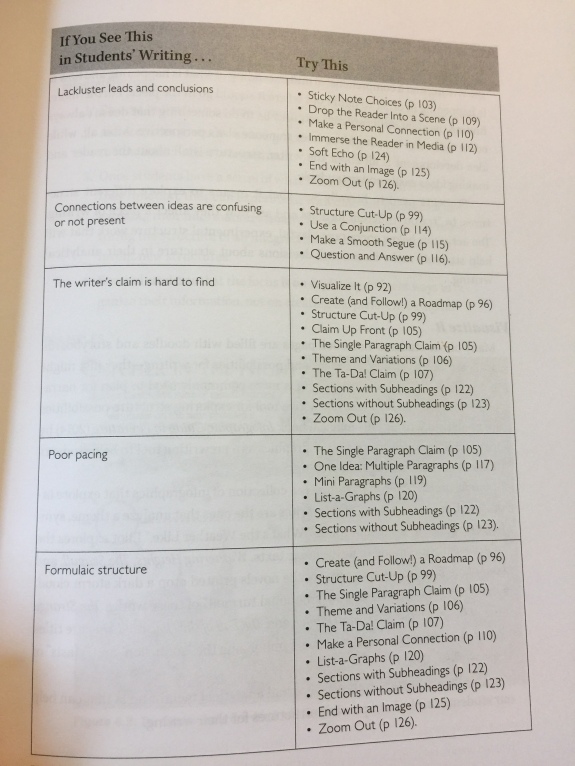As an IB Coordinator and long-time IB kool aid drinker, the Extended Essay (EE) poses an important, appropriate and formidable challenge for Diploma students. The EE is supposed to be the central experience of this program. In my mind, it’s meant to encapsulate everything about the IB experience: Inquiry-based teaching and learning, source-based writing, in-depth study, time management, collaboration with others and reflection. It’s an experience that all students should have a brush with, not just DP students.
This year, not only am I an IB Coordinator, but I’m also the parent of a rising year-one diploma student. Last night, as my family was sitting down for a dinner of enchiladas, rice and beans, and a salad, my daughter brought up the first hurdle in taking on the Extended Essay: “I’m not really sure how to get started.”
The first step in the EE process is settling on a subject area and broad topic that can start to narrow the sources to be consumed. For example, the IB EE website lists some examples of broad topics for Literature:
- Marriage in the novels of Charlotte Bronte
- Comedy in Shakespeare’s A Midsummer’s Night Dream and Twelfth Night
- Autobiographical details in the novels of Cesar Aira.
- A comparison of the main characters in Huckleberry Finn and Candide.
These are by no means final topics, but for me as a coordinator, they are a starting point that allow a student to create a preliminary bibliography and begin the process of research (and by this I mean reading). By June, I’d like my students to have settled into a specific topic. For example (and again from the IB EE website):
- The portrayal of marriages as imperfect in Sarah Water’s Fingersmith and The Little Child.
- The use of the Clown archetype in Shakespeare’s A Midsummer’s Night Dream and Twelfth Night
- Satirical techniques and travel in Huckleberry Finn and Candide.
In response, I thought I would share somethings that I would do if I had to write a 4,000 word research essay. Don’t see the list below as steps in a process. You could do them in any order!
- Start by thinking about subjects at school that I’m passionate about and that I might be thinking about studying in college. Then, I would go to the Extended Essay site and read the “Subject-specific guidance” and particularly “Choice of Topic” sections. These will give examples of the kinds of topics that are appropriate.
- Make an appointment to see AP and IB teachers of subjects you are passionate about. Talk to them about potential EE topics. Don’t know who in the building might know about something you are interested in researching, see your IB Coordinator or Librarian.
- Brainstorm lists of ideas your interested in. Use these as jumping off points to further reading and exploration.
- Surf Twitter, find blogs, podcasts and content aggregators who post interesting material and content. Read this stuff and add to your brainstorming.
- Read the Sunday New York Times. All of it. Take topics and stories from the issue that are intriguing to you, add them to your brainstorming.
- What are your hobbies? How might what you do outside of class lead to topics and research? I’ve seen great essays come out of a love of Ultimate Frisbee, or Violin playing, or War Movies, or Harry Potter.
- Talk to family. Have mom or dad or aunt or uncle help you brainstorm about your passions and interests. Talk to them about how their experiences with research and their passions. Maybe this will spark topics.
- Go to a museum or historical society. In our area, the George Eastman house, Strong Museum of Play, Art Gallery, Women’s Rights Hall of Fame could all lead to you thinking about interesting ideas.
- My English students write “Passion Blogs.” If you write in any way about stuff that interests you, go back and look at other writing and add to your brainstorming, Not only should you add it to your brainstorming, you should “content spin it” or “topic spin it.” What does that mean? Look at my example below.
Recently, I had a student write a mock “How-to” blog post on surviving a zombie apocalypse. To content spin it, with an aim of developing topics, I take the central topic and consider how different IB subject areas or disciplines would explore that topic.
English: The presentation of the zombie in post-millennium YA literature.
History: The history of zombies in American culture.
Sciences: Necrotizing Bacteria.
Film: The presentation of the zombie in film.
World Studies: Beliefs about zombies in religion and the treatment of the AIDS virus in Africa and the Caribbean.
My last thought is schedule some time over Christmas break to meet with your IB Coordinator for coffee or a burger and have a chat about the EE. Get his or her perspective on this project and talk about your ideas.

















You must be logged in to post a comment.